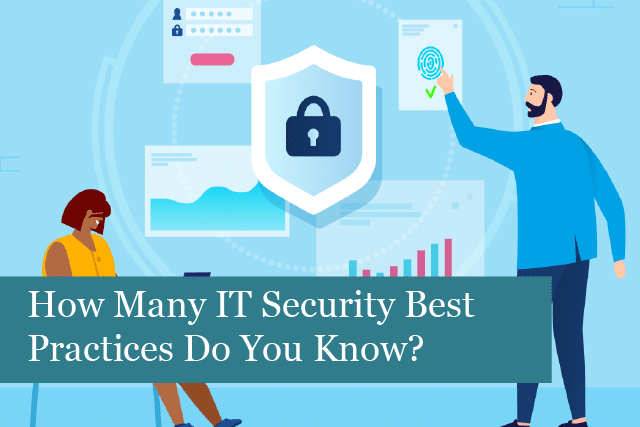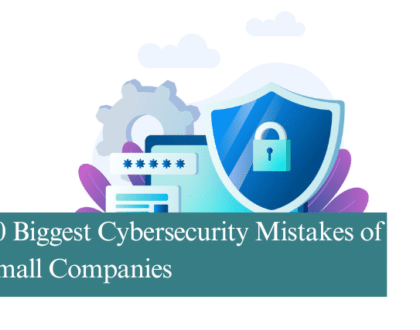
Introduction
In an increasingly digital world, safeguarding your digital assets has never been more crucial. “How Many IT Security Best Practices Do You Know?” This question lies at the core of modern cybersecurity. In this comprehensive guide, we will delve deep into IT security best practices, equipping you with the knowledge and tools to fortify your cyber defences. Whether you’re an IT professional or a concerned individual, this article is your gateway to understanding and implementing top-tier security measures.
The Fundamentals: Securing Your Digital Realm
What Are IT Security Best Practices?
Before we dive into the details, let’s define IT security best practices. These are a set of guidelines, strategies, and techniques designed to protect your digital assets, including data, networks, and systems. Implementing these practices is paramount to safeguarding against cyber threats.
Understanding the Threat Landscape
To bolster your IT security, you must comprehend the evolving threat landscape. Cybercriminals are continually devising new methods to breach defences. Stay updated on the latest threats and vulnerabilities to stay one step ahead.
How Many IT Security Best Practices Do You Know?
Here’s a sneak peek of some fundamental IT security best practices you should be aware of:
- Password Hygiene: Strong, unique passwords are your first line of defence.
- Multi-Factor Authentication (MFA): Adding an extra layer of security with MFA.
- Regular Updates and Patch Management: Keep your software up-to-date.
- Firewalls: Implement firewalls to filter incoming and outgoing traffic.
- Data Encryption: Protect sensitive data with encryption.
- Employee Training: Educate your team about security best practices.
Advanced Strategies: Strengthening Your Defences
Threat Detection and Incident Response
Intrusion detection systems and incident response plans are crucial. These systems identify suspicious activities and enable swift action when a breach occurs. Implementing them is akin to having a digital security guard that never sleeps.
Security Audits and Assessments
Regular security audits assess your existing defences and identify weaknesses. By proactively addressing these vulnerabilities, you minimise the risk of a successful cyberattack.
Frequently Asked Questions (FAQs)
What Are the Most Overlooked IT Security Best Practices?
Many overlook these crucial practices:
- Social Engineering Awareness: Don’t underestimate the power of social engineering attacks.
- Regular Backups: Data loss can be devastating; regular backups are a lifesaver.
- Vendor Security: Assess the security practices of your third-party vendors.
How Can Small Businesses Improve Their IT Security?
Small businesses can:
- Invest in Cybersecurity Tools: Utilise cost-effective cybersecurity solutions.
- Employee Training: Train your staff to recognise and respond to threats.
- Incident Response Plan: Prepare for the worst with a well-defined plan.
Is Antivirus Software Enough for Personal Security?
While antivirus software is essential, it’s not sufficient on its own. Combine it with strong passwords, regular updates, and safe browsing habits for comprehensive personal security.
What Is the Role of Artificial Intelligence in IT Security?
AI plays a pivotal role in threat detection. Its ability to analyse vast datasets in real-time can identify anomalies and potential threats that might elude human observers.
Can You Recommend Reliable Sources for Staying Informed About Cybersecurity?
Certainly! Some credible sources include:
- CERT: The Computer Emergency Response Team offers valuable insights.
- Cybersecurity Magazines: Subscribing to reputable publications is a smart move.
- Online Communities: Participate in forums and communities dedicated to cybersecurity.
What Steps Should I Take If My Business Suffers a Data Breach?
If you suspect a data breach, follow these steps:
- Isolate Affected Systems: Prevent further damage by isolating compromised systems.
- Notify Authorities: Comply with legal obligations and report the breach.
- Inform Stakeholders: Notify customers and partners about the breach.
- Forensic Analysis: Conduct a forensic analysis to determine the extent of the breach.
- Enhance Security: Strengthen your security measures to prevent future breaches.
Conclusion
In the ever-evolving landscape of cyber threats, knowing “How Many IT Security Best Practices Do You Know?” is not merely a question but a call to action. By incorporating these best practices and staying informed, you can bolster your defences against the relentless tide of cyberattacks. Remember, cybersecurity is a continuous journey, and your commitment to safeguarding your digital assets will determine your success in this endeavour.
Recommended Posts

How to Get the Most Out of Your IT Budget
25th April 2025

10 Biggest Cybersecurity Mistakes of Small Companies
18th April 2025

The Importance of Planning in Business IT Solutions
11th April 2025
